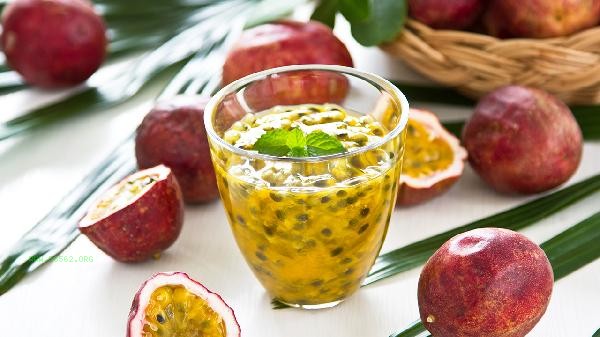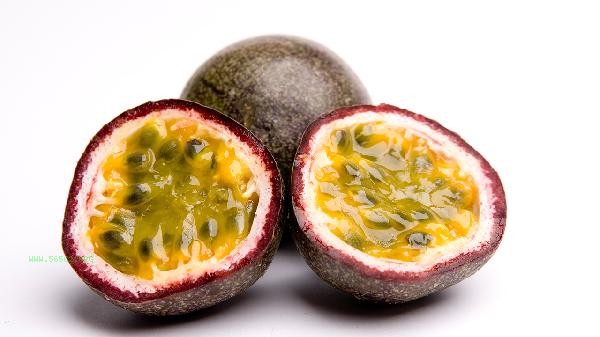When passion fruit is cut open, it is easy for juice to flow. Three methods can be used to reduce juice loss: freezing and cutting in half, cutting the top horizontally to preserve the flesh, and using specialized tools.

1. Cut the passion fruit in half after freezing.
Place the passion fruit in the freezer compartment of the refrigerator and freeze for about half an hour. The flesh and shell are more easily separated due to low-temperature shrinkage. When taken out and cut in half, the fluidity of the viscous juice decreases, which can effectively reduce juice splashing. This method is suitable for scenarios that require maintaining the integrity of the fruit pulp, such as making drinks or decorating desserts. The freezing time should not be too long to avoid the fruit pulp freezing and affecting the taste.
2. Cut horizontally at the top to preserve the flesh
Use a knife to cut horizontally at the top one-fifth of the passion fruit, expose the flesh, and directly scoop it out with a spoon. Keep the bottom fruit shell as a natural container, which can hold most of the juice. The smaller the incision, the lower the probability of juice overflow. This method is particularly suitable for direct consumption or mixing with yogurt. When operating, pay attention to the sharp angle between the knife and the fruit shell to avoid cutting the bottom.

3. Use the specialized tool
to select the passion fruit specific knife or double headed spoon tool with serrations. The serrated design can firmly pierce into the fruit shell, reducing the splashing of juice caused by sliding. One end of the spoon can easily separate the flesh and inner membrane, while the other end has a pointed tip for drilling and draining water in the fruit shell. Clean the tools promptly after use to avoid juice residue corroding metal materials. Suitable for situations where batch processing of passion fruit is required.

When processing passion fruit in daily life, it can be paired with a deep mouthed container to receive the juice. After cutting it open, gently press the flesh with a spoon back as soon as possible to promote separation. Choosing mature fruits with slightly wrinkled skin is easier to handle, while immature green fruits have strong flesh adhesion. The residual juice contains vitamin C and dietary fiber. It is recommended to rinse with water and apply it to the skin on the hands, or mix it with honey to make a natural drink. When storing, keep the fruit shell intact and store it in a cool place. After cutting, refrigerate and consume within two days.








Comments (0)
Leave a Comment
No comments yet
Be the first to share your thoughts!